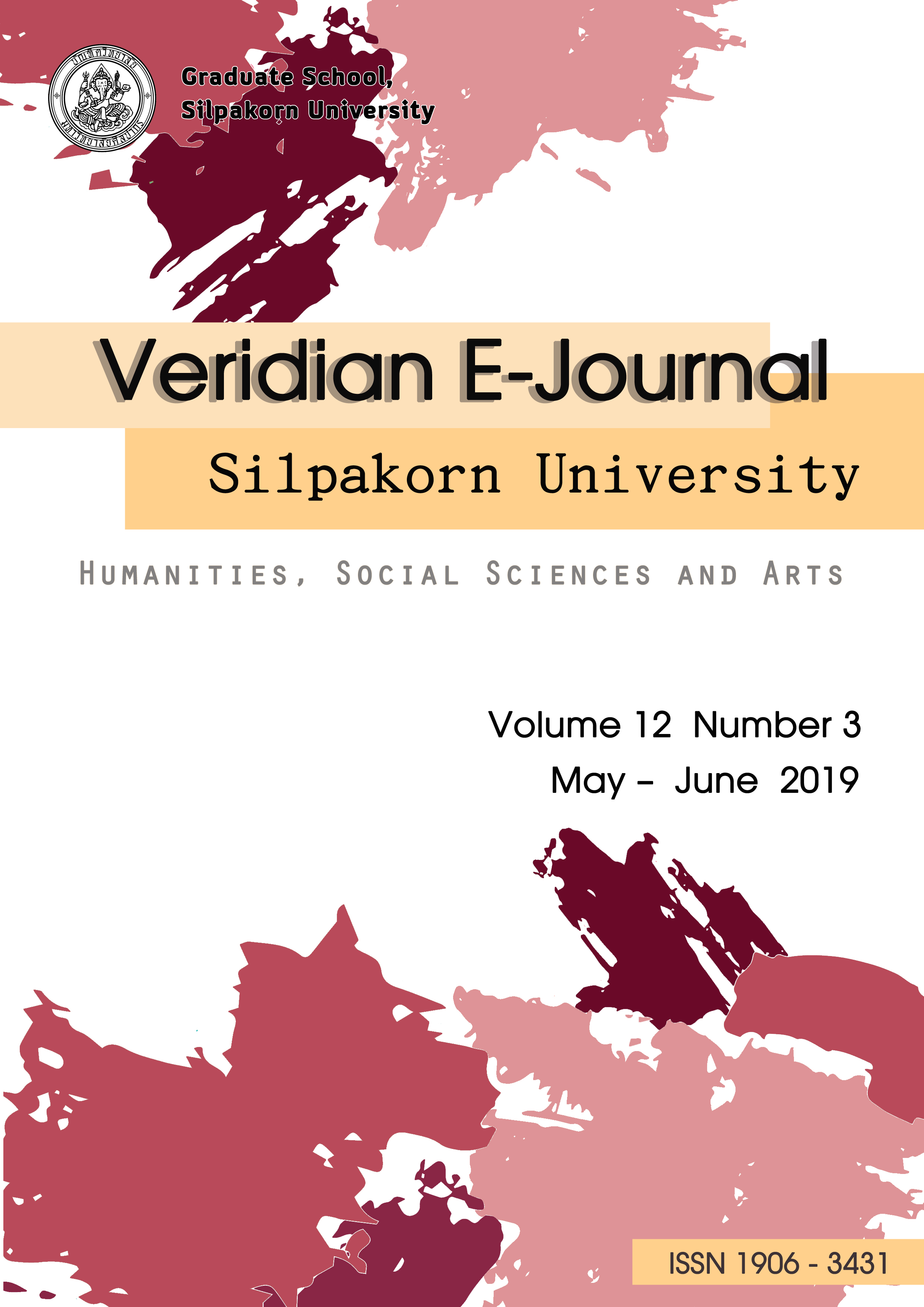แอ็บเจ็คชันในภาพประกอบผลงานดนตรีแนวเดธ เมทัล บรูทัล เดธ เมทัล และกอร์ไกรน์ด (Abjection in Illustrations Applied to Death Metal, Brutal Death Metal, and Goregrind Albums)
Main Article Content
บทคัดย่อ
บทความนี้มุ่งนำเสนอความเป็นแอ็บเจ็คชันซึ่งเป็นทฤษฎีที่พัฒนาโดยนักปรัญชาและนักจิตวิเคราะห์ จูเลีย คริสเทวา (Julia Kristeva) ที่มีในภาพประกอบผลงานดนตรีแนวเดธ เมทัล (death metal) บรูทัล เดธ เมทัล (brutal death metal) และกอร์ไกรน์ด (goregrind) โดยทำการศึกษาและสืบค้นจากภาพประกอบหน้าปกอัลบั้มผลงานดนตรีแขนงดังกล่าวจำนวน 40 ภาพจาก 40 อัลบั้ม ซึ่งถูกเผยแพร่ในคริสต์ทศวรรษ 1980 - 2010 ผลจากการศึกษาและสืบค้นพบว่าความเป็นแอ็บเจ็คชันในภาพประกอบผลงานดนตรีแนว เดธ เมทัล บรูทัล เดธ เมทัล และกอร์ไกรน์ดโดยภาพรวมแล้วสามารถถูกพบได้จากภาพลักษณ์ของศพ เครื่องใน เลือดและของเสียของร่างกาย ชิ้นส่วนอวัยวะมนุษย์ และร่างกายมนุษย์ที่ถูกคุกคามและตกอยู่ในอันตราย ซึ่งภาพลักษณ์เหล่านี้บ่งชี้ถึงความตาย โดยจะเห็นได้ว่าภาพประกอบผลงานเหล่านี้ล้วนแต่พัวพันกับความเป็นร่างกาย ซึ่งในทางทฤษฎีดังกล่าว แอ็บเจ็คชันกลับเป็นที่ยอมรับและยังคงอยู่ในสังคมในโลกมนุษย์ เพื่อให้มนุษย์เราตระหนักถึงการดำรงอยู่ของตนเองอย่างแท้จริง จะเห็นได้ว่าภาพประกอบผลงานดนตรีแนวเดธ เมทัล บรูทัล เดธ เมทัล และกอร์ไกรน์ดนั้นมีจำนวนมากขึ้นตามกาลเวลานับตั้งแต่ปลายคริสต์ทศวรรษ 1980 ซึ่งสอดคล้องกับการพัฒนาของดนตรีแขนงดังกล่าว อีกทั้งเนื้อหายังมีความเป็นแอ็บเจ็คชันมากขึ้นเรื่อยๆจากช่วงเวลาที่ดนตรีแขนงเหล่านี้เริ่มก่อตัวขึ้นและพัฒนาความเป็นแอ็บเจ็คชันจนถึงขีดสุดในคริสต์ทศวรรษ 2000 จวบจนปัจจุบัน ซึ่งภาพประกอบเหล่านี้สามารถนำไปใช้เป็นแนวทางศึกษาทฤษฎีแอ็บเจ็คชันของคริสเทวา แอ็บเจ็คท์ อาร์ท รวมไปถึงทฤษฎีศิลป์ทั่วไปและศิลปะแขนงอื่นๆได้เช่นกัน
This article aims to present abjection, which is a theory developed by philosopher and psychoanalyst Julia Kristeva, in illustrations found in death metal, brutal death metal, and goregrind music. It focuses on a study and research of 40 illustrations applied to 40 albums of the genres which were released in 1980s - 2010s. The study and the research show that the quality of abjection in the illustrations are generally found from their images of corpses, entrails, blood, excrement, parts of human organs, and human bodies threatened and in danger. These images signify death. It can be seen that the illustrations are revolved around corporeal aspects. It can also be seen that the illustrations have increased in quantity chronologically from the late 1980s to the present time, which is consistent with the development of the genres aforementioned. The quality of abjection in the illustrations had also been more intense from time to time and reached its peak in 2000s until these days. These illustrations can be utilized in the study of the theory of abjection, abject art, art theory, and other branches of art.

